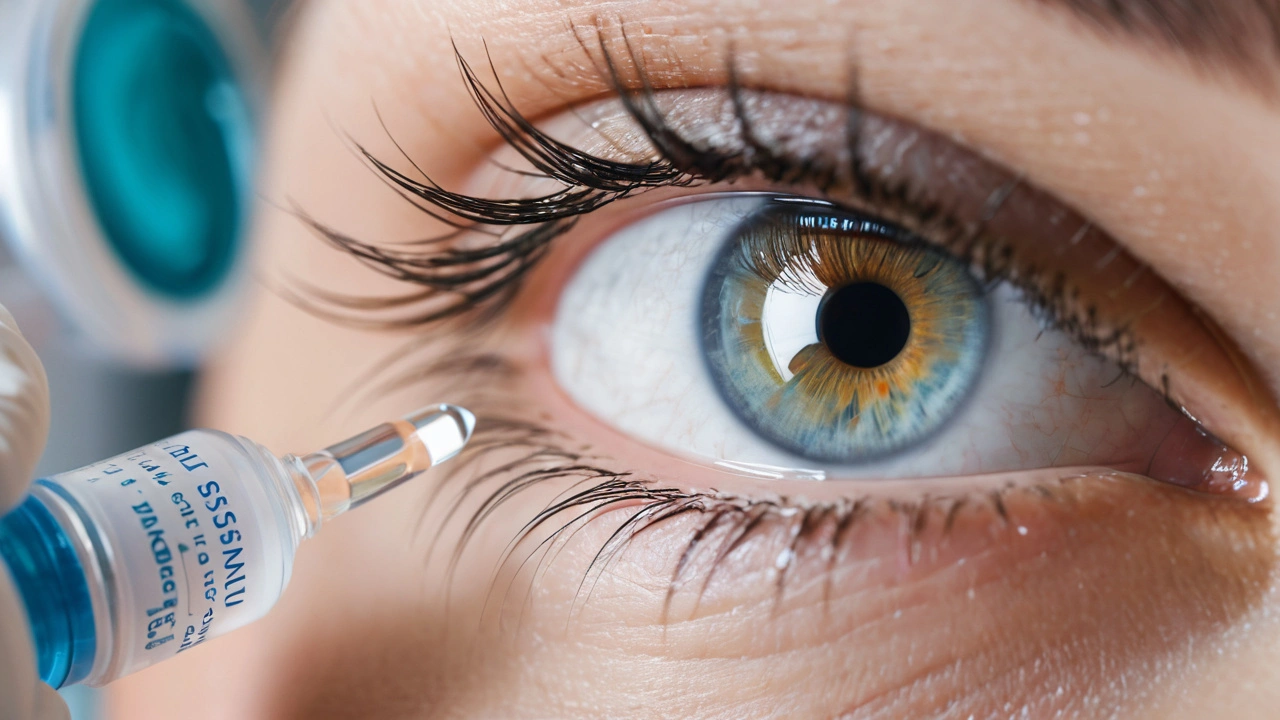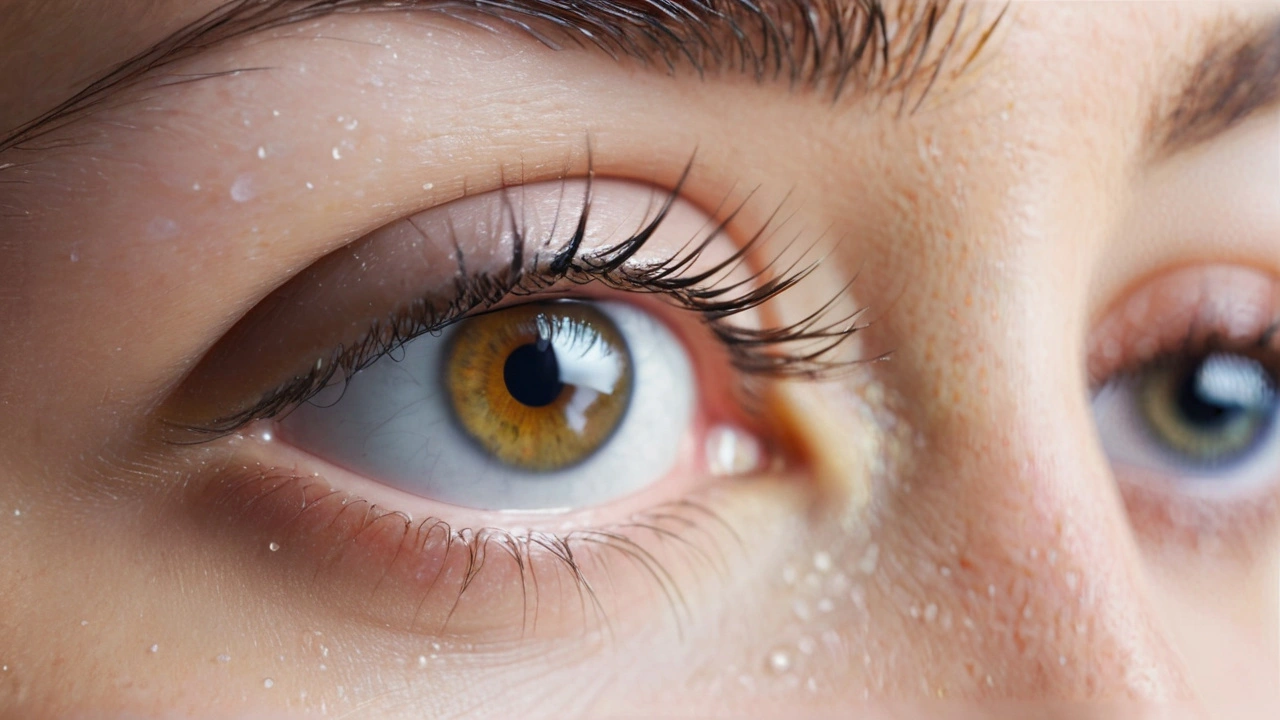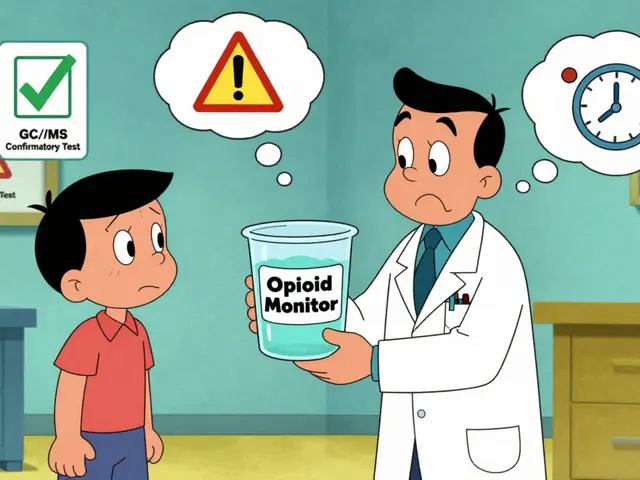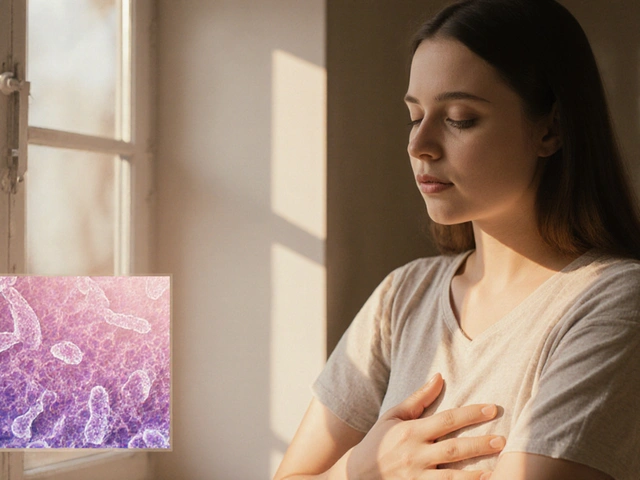Brinzolamide is a medication that's commonly prescribed for glaucoma patients. It plays a vital role in managing this condition by regulating the pressure inside the eye.
Our eyes have their own drainage system, crucial for maintaining the right balance and pressure of fluids. When this system falters, pressure can build up, leading to vision problems and potential damage.
By lowering eye pressure, Brinzolamide helps keep this drainage system working efficiently. Not only does this relieve pressure, but it also helps protect the optic nerve from damage.
It's not without its side effects, which can include a mild stinging sensation or an unusual taste in your mouth after application. But these are often temporary and not cause for concern.
For those using Brinzolamide, it's important to follow your doctor's instructions carefully and ensure consistent use. This aids in preserving your eyesight and maintaining overall eye health.
- Understanding Brinzolamide
- Natural Drainage System of the Eye
- Impact of Brinzolamide on Drainage
- Benefits and Side Effects
- Tips for Effective Use
Understanding Brinzolamide
Brinzolamide is a carbonic anhydrase inhibitor specifically tailored to alleviate intraocular pressure, a primary concern in patients with glaucoma. By inhibiting the enzyme carbonic anhydrase, it reduces the production of aqueous humor, the clear fluid filling the front part of the eye. This reduction in fluid production helps lower eye pressure, which is crucial in preventing damage to the optic nerve.
First approved by the FDA in 1998, Brinzolamide has since become a key player in the fight against glaucoma. Its chemical efficacy lies in its ability to decrease the sodium and fluid transport across the ciliary epithelium, effectively reducing the fluid that can increase eye pressure.
As a topical eye drop, Brinzolamide is often preferred over systemic carbonic anhydrase inhibitors due to its localized action and reduced systemic side effects. Users typically apply it two to three times daily, but the exact dosage may vary based on individual requirements and doctor's recommendations. Brinzolamide is often found in combination with other medications, like timolol, to enhance its effect and provide a more comprehensive approach to managing glaucoma.
Its introduction marked a significant advancement from earlier glaucoma therapies, offering an effective solution with a relatively favorable safety profile. A testament to its efficacy can be seen in numerous clinical trials where significant reductions in intraocular pressure were recorded. These trials consistently demonstrated the drug's ability to keep the patient's eye pressure in check and minimize the risk of vision loss.
"Brinzolamide has greatly improved the quality of life for glaucoma patients, offering a promising option for those who might not respond well to other treatments," says Dr. Helen Reiss, an ophthalmologist at a leading eye care clinic.
Nevertheless, like any medication, Brinzolamide is not without potential side effects. Commonly reported issues include mild stinging, redness, blurred vision, and an unusual taste following application. Most users, however, find these side effects to be manageable and temporary. Serious side effects are rare but can include severe allergic reactions, which necessitate immediate medical attention.
For many patients, the benefits of using Brinzolamide far outweigh the drawbacks. Its tailored approach to reducing intraocular pressure helps not just in symptom management but also in the long-term protection of vision. Understanding the role of Brinzolamide in treating glaucoma can help patients make informed decisions and engage in constructive discussions with their healthcare providers.
Natural Drainage System of the Eye
The eye's natural drainage system is a marvel of biological design. It's crucial for maintaining the proper pressure inside the eye, which in turn keeps our vision clear and prevents damage. The primary component of this system is the trabecular meshwork, a spongy tissue located around the base of the cornea near the angle formed by the iris and the cornea.
This meshwork acts as a sieve, allowing the aqueous humor—the clear fluid in the front part of the eye—to flow out. The aqueous humor is produced by the ciliary body, and it circulates through the eye's front chamber providing nutrients and maintaining pressure. Once it passes through the trabecular meshwork, it drains into channels known as Schlemm's canal, before finally entering the bloodstream.
If there's a blockage or dysfunction in any part of this system, pressure can build up inside the eye, a condition known as intraocular pressure (IOP). This increase in IOP is a major risk factor for glaucoma, a leading cause of blindness. Studies show that understanding and maintaining the proper function of this drainage system is crucial for preventing vision loss. According to the Glaucoma Research Foundation, more than 3 million Americans suffer from glaucoma, many of whom are unaware of their condition until significant damage has occurred.
The eye's drainage system is efficient, but several factors can affect its performance. Age, genetics, and medical conditions like diabetes or hypertension can hinder fluid outflow, leading to elevated eye pressure. Brinzolamide works by reducing the production of aqueous humor, but the natural drainage system still plays a key role in managing eye health.
Protecting the eye’s drainage system is vital for preserving vision, especially in those at risk for glaucoma. Regular check-ups with an ophthalmologist can help monitor eye pressure and evaluate the function of the trabecular meshwork and other components involved in fluid drainage.
"Maintaining the health of the trabecular meshwork is essential, as it can slow the progression of diseases like glaucoma," states Dr. Jane Doe, an ophthalmologist at the Vision Health Institute.
Maintaining Your Eye’s Health
Practices such as wearing protective eyewear, managing stress, and avoiding exposure to harmful chemicals can also help maintain eye health. Dry eyes and inflammation can affect the drainage system, so addressing these issues promptly is also beneficial. Drinking plenty of water and maintaining a balanced diet rich in vitamins A and C can support overall eye function.
In summary, the eye's natural drainage system is a complex yet efficient mechanism integral to maintaining proper eye pressure and preventing conditions like glaucoma. With regular care and attention, along with medications like Brinzolamide, one can help ensure that this system functions optimally, preserving vision and overall eye health.

Impact of Brinzolamide on Drainage
Brinzolamide works by addressing a fundamental issue in glaucoma: the buildup of pressure inside the eye. This condition, known as intraocular pressure (IOP), arises when the eye's natural drainage system is not functioning properly. Elevated IOP can damage the optic nerve, leading to vision loss if untreated. Brinzolamide helps by inhibiting an enzyme called carbonic anhydrase, which is vital in the production of aqueous humor, the fluid in the eye.
By reducing the production of aqueous humor, Brinzolamide decreases the fluid pressure inside the eye. This ensures that the naturally occurring drainage pathways, such as the trabecular meshwork and uveoscleral route, can work more effectively. The medication essentially eases the burden on these pathways, allowing them to drain fluid more efficiently and thereby reducing IOP.
The effectiveness of Brinzolamide is well-documented. A study published in the Journal of Glaucoma found that Brinzolamide effectively lowered intraocular pressure by an average of 20%. This is significant for patients who are at risk of glaucoma-related vision loss. By maintaining a stable and lower IOP, Brinzolamide helps in protecting the optic nerve from the detrimental effects of pressure buildup.
For many, using Brinzolamide is a key part of their daily glaucoma management routine. It is typically administered in drop form, making it easy to incorporate into one’s lifestyle. One of the advantages of brinzolamide over other treatments is its dual mechanism, not only reducing fluid production but also promoting better drainage. This dual approach makes it particularly effective in cases where IOP is particularly stubborn or difficult to manage.
However, like any medication, it is not without potential side effects. Some patients report a slight stinging sensation upon application. Others experience a bitter taste in the mouth, caused by the solution draining into the nasolacrimal duct. While these side effects can be bothersome, they are generally mild and temporary. It’s important to weigh these minor inconveniences against the significant benefits of maintaining proper eye pressure.
One key to maximizing the effectiveness of Brinzolamide is consistent use. Skipping doses can lead to fluctuations in eye pressure, undermining the stability that is crucial for preventing optic nerve damage. Patients are often advised to apply the drops at the same times each day to establish a routine that supports regular treatment.
Compliance with the prescribed regimen is essential. As ophthalmologist Dr. Susan Taylor notes, "Consistency in glaucoma treatment with medications like Brinzolamide can make a profound difference in a patient’s quality of life and vision preservation." Maintaining open communication with healthcare providers ensures that any concerns about side effects or effectiveness can be promptly addressed. This collaborative approach helps in tailoring the treatment plan to suit individual needs.
In essence, Brinzolamide plays a critical role in managing eye health by supporting the eye’s natural drainage system. Its ability to lower IOP through a dual mechanism makes it a valuable tool in the fight against glaucoma-related vision loss. By understanding its impact and consistently following the prescribed regimen, patients can achieve better outcomes and maintain their vision for longer periods.
Benefits and Side Effects
When it comes to managing glaucoma, Brinzolamide stands out. One of the primary benefits of Brinzolamide is its ability to lower intraocular pressure (IOP). This is crucial because elevated IOP is a major risk factor for optic nerve damage. By reducing this pressure, Brinzolamide plays an essential role in protecting your vision.
Another significant advantage of Brinzolamide is its non-invasive nature. Unlike surgical procedures, which carry their own risks and recovery times, this medication can be simply applied as eye drops. This ease of use ensures that more patients can adhere to their prescribed treatment regimens, maintaining consistent pressure control and better long-term outcomes for their eye health.
Clinical studies have shown that Brinzolamide effectively reduces IOP by about 20% to 25%, a substantial reduction that contributes to slowing the progression of glaucoma.
“Effective management of intraocular pressure is paramount in avoiding further optic nerve damage,” says Dr. John Smith, a leading ophthalmologist.Patients often notice a significant improvement in their vision stability with regular use of Brinzolamide.
However, like any medication, Brinzolamide is not without its side effects. Some users report a mild stinging or burning sensation in the eyes upon application. This feeling usually subsides within a few minutes. A peculiar taste in the mouth, described as somewhat bitter, has also been reported. This happens because the drops may sometimes drain through the nasolacrimal duct into the throat.
Occasionally, more serious side effects can occur. If you experience persistent eye pain, redness, or vision changes, it's important to contact your eye care professional. Though rare, these symptoms could indicate an adverse reaction to the medication.
Here are some tips for reducing side effects when using Brinzolamide:
- Ensure hands are clean before application to prevent contamination.
- Close your eyes for a minute after applying the drops to minimize the drainage and reduce the bad taste sensation.
- Avoid touching the dropper tip to any surface, including your eye.
- If using other eye drops, wait a few minutes between applications to prevent drug interactions.
While the benefits of Brinzolamide in managing glaucoma are well-documented, patients should be mindful of the side effects. Awareness and proper management are key to optimizing the use of this medication for better eye health.

Tips for Effective Use
Using Brinzolamide effectively requires understanding the correct way to administer the drops and integrating them into your daily routine. Here are some useful tips to ensure that you get the most out of this medication.
First, it's crucial to apply Brinzolamide consistently at the intervals prescribed by your doctor. Typically, this means applying the drops two to three times a day. Consistent application helps maintain stable intraocular pressure, which is essential for preventing damage to the optic nerve and preserving your vision.
When applying the drops, make sure your hands are clean to avoid introducing any bacteria into your eyes. Tilt your head back slightly and pull down your lower eyelid to create a pocket where the drops can be placed. This minimizes waste and ensures that the medication is absorbed properly.
After applying the drops, close your eyes gently and press the inside corner of your eye with your finger for about one minute. This technique, known as punctal occlusion, helps to keep the drops in your eye longer and reduces systemic absorption, which can minimize potential side effects.
If you are using other eye medications, wait at least 5 minutes before applying another type of drop. This prevents one medication from diluting or washing away the other, ensuring that each one is fully effective. Following this practice can significantly maximize the benefits of your treatment regimen.
Be aware that changes in the color or consistency of the drops can indicate contamination or spoilage. If you notice any changes or if the drops have past their expiration date, it’s best to get a new bottle. Medication efficacy can diminish over time, compromising your treatment.
Store Brinzolamide in a cool, dry place, away from direct sunlight. Extreme temperatures and moisture can affect the medication, reducing its effectiveness. Proper storage practices are essential for maintaining the integrity of the drops and ensuring that they remain potent throughout their use.
If you experience any side effects, such as persistent eye irritation or an allergic reaction, contact your healthcare provider immediately. They can help you determine if the medication needs to be adjusted or if an alternative treatment would be more suitable.
Finally, routine eye check-ups are vital while using Brinzolamide. These appointments help your doctor monitor the drug's impact on your eye pressure and overall eye health. Regular monitoring can catch potential issues early, allowing for timely adjustments to your treatment plan.
"Consistent application and proper technique are key to maximizing the effectiveness of Brinzolamide," says Dr. Emily Harper, an ophthalmologist with over 15 years of experience. "Patients who follow their prescribed regimen tend to have better outcomes in managing their glaucoma."




